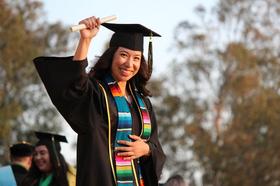For the 2025-26 school year, there are 4 private schools serving 816 students in 50702, IA (there are 4 public schools, serving 3,194 public students). 20% of all K-12 students in 50702, IA are educated in private schools (compared to the IA state average of 9%).
The top ranked private schools in 50702, IA include St. Edward School and Blessed Maria Assunta Pallotta Middle School.
The average acceptance rate is 80%, which is lower than the Iowa private school average acceptance rate of 85%.
Top Ranked 50702 Iowa Private Schools (2025-26)
School
Location
Quick Facts
3225 W 9th St
Waterloo, IA 50702
(319) 232-1422
Waterloo, IA 50702
(319) 232-1422
Gr: 6-8 | 173 students Acceptance rate listed
St. Edward School
(Catholic)
139 E Mitchell Ave
Waterloo, IA 50702
(319) 233-6202
Waterloo, IA 50702
(319) 233-6202
Gr: K-5 | 339 students Acceptance rate listed
Columbus Catholic High School
(Catholic)
3231 W 9th St
Waterloo, IA 50702
(319) 232-1422
Waterloo, IA 50702
(319) 232-1422
Gr: 9-12 | 247 students Avg. class size: 18 students
928 Jefferson St
Waterloo, IA 50702
(319) 235-6191
Waterloo, IA 50702
(319) 235-6191
Gr: PK-4 | 57 students
50702, Iowa Private Schools (Closed)
School
Location
Quick Facts
Sacred Heart School (Closed 2016)
(Catholic)
620 W 5th St
Waterloo, IA 50702
(319) 234-6593
Waterloo, IA 50702
(319) 234-6593
Gr: NS-5 | 171 students
Frequently Asked Questions
What are the top ranked private schools in 50702, IA?
The top ranked private schools in 50702, IA include St. Edward School and Blessed Maria Assunta Pallotta Middle School.
How many private schools are located in 50702?
4 private schools are located in 50702.
What percentage of students in 50702 go to private school?
20% of all K-12 students in 50702 are educated in private schools (compared to the IA state average of 9%).
Recent Articles

Student Success Predictors at Community Colleges
A practical guide to student success predictors at community colleges for private school advisors helping graduates navigate two-year pathways.

Career Pathways with Community College for Private School Grads
Explore top career pathways with community college for private school graduates, including high-demand jobs, transfer options, and 2025 workforce trends.

Navigating the FAFSA & Financial Aid Timeline for Community College
Learn how to navigate FAFSA and financial aid timelines when starting at community college — from application to disbursement in 2025.
